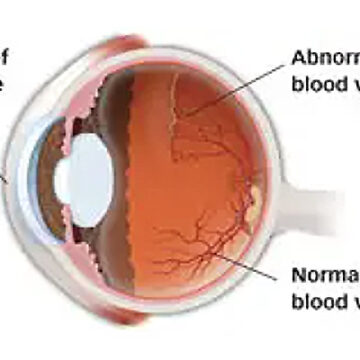Blog
Retinopathy of Prematurity (ROP)

What is retinopathy of prematurity?
Retinopathy of prematurity (ROP) is a serious eye disorder that mainly affects babies born before 31 weeks of pregnancy and who weigh 2 3/4 pounds or less. It is one of the most common causes of vision loss in children and can lead to lifelong blindness and visual impairment. Of the 28,000 infants in the U.S. each year who are born at this low weight, 14,000-16,000 have ROP to some degree.
ROP is classified into five stages, ranging from mild stage I disease to very severe stage V ROP. About 90 percent of infants with ROP have a mild form that gets better and leaves no permanent damage. The remainder require medical treatment to prevent destruction of vision.
What causes retinopathy of prematurity?
The retina develops rapidly during the last 12 weeks of pregnancy and is mostly, but not completely, finished at birth. In fact, the retina is not fully developed until about a month after birth. If a baby is born too early, blood vessels in the eye don’t get a chance to finish growing toward the edges of the retina. As a result, the edges of the retina do not receive needed oxygen and nutrients. Abnormal blood vessels then begin to grow and spread throughout the retina. Because they are fragile, they are prone to bleeding, which can scar the retina. As the scars shrink, they pull on the retina and can cause it to detach from the back of the eye. Retinal detachment is a feature of stage IV and V ROP.
While being born prematurely is the main cause of ROP, other causes include:
- Anemia
- Blood transfusions
- Respiratory distress
- Breathing problems
- Poor health in an infant
Can retinopathy of prematurity be treated?
Laser therapy and cryotherapy are the most effective treatments for advanced ROP. Laser therapy uses heat and cryotherapy uses extreme cold to destroy the edges of the retina where the abnormal blood vessels are growing, slowing or reversing their development. Children who have these treatments may lose some of their peripheral vision but are able to retain their central vision, which is most important for daily tasks. Other treatments for advanced ROP include:
- Scleral buckle. Placement of a silicone band around the eye to keep vitreous gel from pulling on the scar tissue and enabling the retina to flatten onto the wall of the eye. The buckle needs to be removed months or years later, as the eye grows.
- Vitrectomy. During this surgery, the vitreous is removed and replaced with saline solution. Scar tissue on the retina is peeled back or removed, permitting the retina to relax against the eye wall.
- Injections. Research is under way to evaluate medications injected into the eye which stop the growth of abnormal blood vessels in ROP.